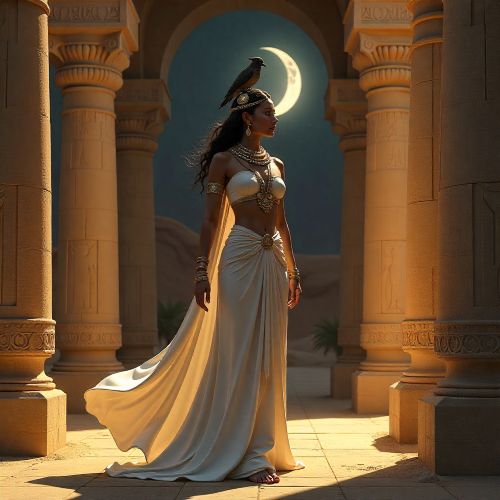Kushite Mythology
Kushite mythology stands as one of the great spiritual legacies of ancient Africa — a powerful synthesis of indigenous Nubian beliefs, Egyptian cosmology, and uniquely African symbolism. Flourishing in the Kingdom of Kush, which rose along the Middle Nile in what is now Sudan, this mythology reflected a civilization that was both heir to Egypt’s grandeur and architect of its own sacred vision. The Kushites, ruling from cities like Napata and Meroë, created a world where kings were divine intermediaries, lions were symbols of celestial power, and gods walked alongside the river’s eternal flow. Their beliefs, rituals, and temples reveal a distinctly African expression of divinity — one grounded in strength, balance, and the unbroken rhythm of life and death.
At the center of Kushite mythology stood Amun, the supreme creator god and guardian of kingship. Adopted from Egypt yet transformed in meaning, Amun became the heart of Kushite spiritual life — his worship centered at the sacred mountain of Gebel Barkal, believed to be his earthly dwelling. Here, every coronation ritual and offering connected divine order with earthly rule. The Kushite kings, often known as the “Black Pharaohs” during Egypt’s 25th Dynasty, claimed their legitimacy through Amun’s blessing, presenting themselves as chosen stewards of both the Nile and the gods. Yet, while Amun symbolized divine authority, the lion-headed god Apedemak embodied the uniquely Kushite spirit — fierce, independent, and deeply rooted in the African landscape. Revered as a god of war, fertility, and protection, Apedemak was not an imported deity but a homegrown expression of strength and sovereignty, depicted in temple reliefs as a lion standing tall beside kings and warriors.
Kushite mythology also emphasized the sacred role of women, particularly through the powerful queens known as the Kandakes (or Candaces). These royal women, often portrayed as priestesses and protectors of divine order, held immense spiritual and political authority. They performed rituals to Amun and Apedemak, ensured the fertility of the land, and maintained cosmic balance. This reverence for feminine power reflected the Kushite view of the universe as a partnership — male and female, strength and compassion, sun and river, all part of one harmonious whole.
The Kushites believed in an afterlife governed by moral order and divine justice. Their pyramids at Meroë, smaller but more numerous than those of Egypt, were gateways to eternity, adorned with scenes of gods, animals, and celestial symbols. These tombs suggest a faith centered on transformation — the soul’s journey from earth to the stars under the watchful gaze of divine guardians. Rituals involving incense, song, and libation honored ancestors and reaffirmed the cyclical bond between the living and the divine.
Kushite mythology, though often overshadowed by Egypt’s fame, represents an equally sophisticated and enduring vision of spirituality. It speaks of a people who absorbed foreign influences yet redefined them through their own cultural lens — forging a mythology that was unmistakably African in character and universal in meaning. Through its lion gods, sacred queens, and timeless temples, the faith of Kush continues to echo the ancient truth that power and holiness flow together in the heart of the Nile.


